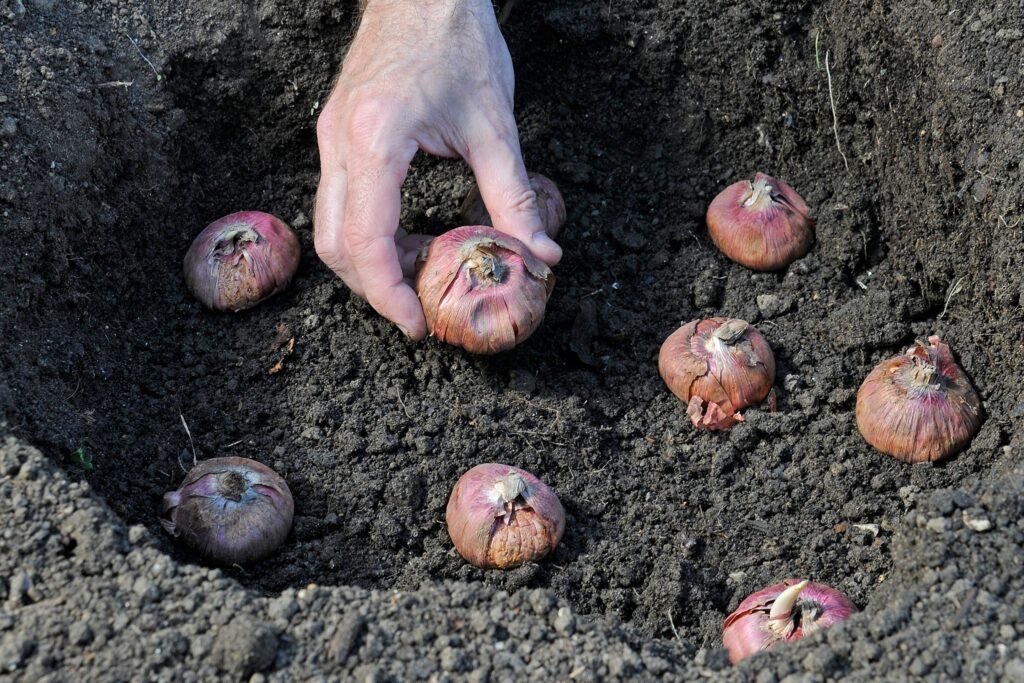How to Plant Gladiolus Bulbs
Gladiolus, commonly known as sword lilies, are a popular choice among gardeners for their tall, elegant flower spikes and vibrant colors. These perennial flowers bloom in the summer and can add a stunning visual impact to gardens, borders, and containers. This guide will provide detailed instructions on how to plant gladiolus bulbs, care for them, and ensure a beautiful display of flowers.
Understanding Gladiolus
Gladiolus belongs to the family Iridaceae and is native to regions with warm climates, such as South Africa and the Mediterranean. The name “gladiolus” is derived from the Latin word “gladius,” meaning sword, which refers to the shape of the plant’s leaves. Gladiolus flowers are characterized by their funnel-shaped blossoms that grow on tall spikes, making them excellent for cut flower arrangements.
Choosing Gladiolus Bulbs
When selecting gladiolus bulbs (or corms), consider the following factors:
- Variety: Gladiolus comes in numerous varieties, each with unique colors and heights. Choose varieties that suit your garden’s aesthetic.
- Quality: Look for firm, plump corms without any signs of mold or damage. Healthy corms will produce strong plants.
- Size: Larger corms tend to produce taller plants with more flowers.
When to Plant Gladiolus Bulbs
The ideal time to plant gladiolus bulbs is in the spring after the danger of frost has passed and the soil has warmed up. In most regions, this is typically between late April and early June. To extend the blooming period, consider staggering your planting every few weeks throughout the spring.
Where to Plant Gladiolus Bulbs
Gladiolus thrives in full sun, requiring at least 6 to 8 hours of sunlight per day. Choose a location with well-drained soil, as gladiolus does not tolerate soggy conditions. If your soil is heavy or clay-like, amend it with organic matter or plant in raised beds to improve drainage.
Preparing the Soil
- Loosen the Soil: Use a garden fork or tiller to loosen the soil to a depth of about 10 to 12 inches. This helps the corms establish strong roots.
- Add Organic Matter: Mix in compost or well-rotted manure to enrich the soil with nutrients. Gladiolus prefers moderately fertile soil.
- Check pH Levels: Ideally, the soil pH should be between 6.0 and 7.0. You can test your soil and amend it with lime or sulfur if necessary.
Planting Gladiolus Bulbs
- Dig Holes: Dig holes that are approximately 4 to 6 inches deep. The depth can vary depending on the size of the corms; larger corms may require deeper planting.
- Spacing: Space the corms about 3 to 5 inches apart. For a more dramatic effect, consider planting them in groups of 7 or more.
- Positioning: Place the corms in the holes with the pointed end facing up and the flat side down. This orientation promotes healthy growth.
- Cover and Water: Cover the corms with soil and gently press down to eliminate air pockets. Water the area thoroughly after planting to help settle the soil.
Caring for Gladiolus
Proper care is essential for healthy growth and vibrant blooms. Here are some tips:
- Watering: Gladiolus requires consistent moisture, especially during dry spells. Aim to provide about 1 inch of water per week, either through rainfall or supplemental watering.
- Mulching: Apply a layer of mulch around the plants to help retain moisture, suppress weeds, and regulate soil temperature.
- Fertilizing: Use a balanced fertilizer or a fertilizer high in potassium and phosphorus to promote blooming. Fertilize every couple of weeks during the growing season.
- Staking: Tall varieties of gladiolus may require support to prevent them from toppling over. Use bamboo stakes or garden ties to support the flower spikes as they grow.
- Pest and Disease Management: Keep an eye out for pests such as aphids and thrips, as well as diseases like gray mold. Remove affected foliage and apply appropriate treatments if necessary.
Harvesting Gladiolus
Gladiolus can be enjoyed both in the garden and as cut flowers. To harvest:
- Timing: Cut the flowers when the bottom two florets are open. This ensures a longer vase life as the remaining buds will continue to open.
- Cutting Technique: Use sharp, clean scissors or pruning shears to cut the flower spike at an angle. This helps the stems absorb water more effectively.
- Removing Foliage: After cutting, remove any lower leaves that may be submerged in water to prevent rot.
After Bloom Care
Once the blooming period is over, it’s important to care for the plants properly:
- Leave Foliage: Do not cut back the foliage immediately after blooming. Allow it to die back naturally, as it provides energy to the corms for the next growing season.
- Removing Spent Stalks: Once the foliage has turned yellow and withered, you can cut it back to ground level.
- Overwintering: In hardiness zones 8-11, gladiolus can be left in the ground to perennialize. In colder zones, it’s best to dig up the corms and store them in a cool, dry place until the next planting season.
Troubleshooting Common Issues
- Poor Growth: If your gladiolus plants are not growing well, check for soil drainage issues or insufficient sunlight.
- Lack of Blooms: This can occur if the corms were planted too late in the season or if they did not receive adequate nutrients.
- Pests and Diseases: Monitor for signs of pests or diseases and take action promptly to mitigate damage.
Conclusion
Planting gladiolus bulbs can be a rewarding experience, providing stunning blooms throughout the summer. By following these guidelines for planting, care, and maintenance, you can enjoy a vibrant display of gladiolus flowers in your garden. Whether used as cut flowers or as part of your garden’s landscape, gladiolus is sure to impress.
Frequently Asked Questions
- When is the best time to plant gladiolus bulbs?
- Gladiolus bulbs should be planted in the spring after the danger of frost has passed, typically between late April and early June.
- How deep should I plant gladiolus bulbs?
- Plant gladiolus bulbs about 4 to 6 inches deep, depending on the size of the corms.
- How far apart should I space gladiolus bulbs?
- Space the bulbs about 3 to 5 inches apart for optimal growth.
- How often should I water gladiolus?
- Gladiolus requires about 1 inch of water per week, either through rainfall or supplemental watering, especially during dry spells.
- Can I leave gladiolus bulbs in the ground over winter?
- In hardiness zones 8-11, gladiolus can be left in the ground. In colder zones, it’s advisable to dig up the corms and store them until the next planting season.
- What should I do if my gladiolus plants are not blooming?
- Check for issues such as late planting, insufficient sunlight, or nutrient deficiencies.
Additional Resources
For more information on growing gladiolus, you can refer to the following link:
- Wikipedia – Gladiolus
This comprehensive guide should provide you with all the information you need to successfully plant and grow gladiolus bulbs in your garden. Happy gardening!



